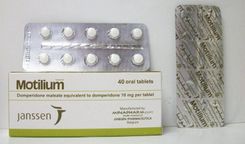This is an automatically translated article.
Amoxmarksans is a drug commonly indicated in the treatment of infections caused by bacteria sensitive to the drug. In order to use the drug effectively, users need to know the information and dosage of Amoxmarksans.
1. What is Amoxmarksans?
Amoxmarksans is a drug with the main ingredient Amoxicillin, manufactured by Marksans Pharma Ltd. - India.
Pharmaceutical name: Amoxmarksans drug. Group of drugs: Belongs to the group of anti-infective drugs, antifungal, antiviral, and antiparasitic drugs. Ingredients: Amoxicillin. Dosage form: Capsules. Content: 500mg. Packing: In a box of 10 blisters, each blister contains 10 capsules.
2. Amoxmarksans uses
Amoxicillin is aminopenicillin, stable in acid medium and has a broader spectrum of activity than benzylpenicillin, on the other hand, is also resistant to gram-negative bacilli. Like other penicillins, amoxicillin provides a marked bactericidal effect, thanks to its mechanism of action by inhibiting the biosynthesis of mucopeptides of the bacterial cell wall.
Amoxicillin is active against the vast majority of gram-positive and gram-negative bacteria such as: Non-penicillinase-producing Staphylococci, Diplococcus pneumoniae, H. influenzae, E.coli, N.gonorrheae, proteus mirabilis and streptococci.
Amoxicillin is also inactive against penicillinase-producing bacteria, in particular all strains of Pseudomonas, methicillin-resistant staphylococci, as well as most Enterobarter and Klebsiella strains.
Therefore, Amoxmarksans is indicated for use in cases of infections caused by drug-sensitive bacteria at the following locations:
Upper respiratory tract (including ENT) such as: inflammation otitis media, sinusitis, tonsillitis. Lower respiratory tract such as lobar pneumonia, bronchial pneumonia and exacerbation of chronic bronchitis. Digestive tract like typhoid fever. Urogenital tract such as: Gonorrhea, septic abortion or obstetric infection, nephritis - pyelonephritis. Infectious conditions, such as sepsis, endocarditis, and meningitis caused by susceptible organisms, should be treated initially with a high dose parenteral route and, if possible, in combination. with another antibiotic. Endocarditis Prophylaxis: For bacteraemia where there is a risk of developing endocarditis, Amoxicillin can prevent them; patients should consult full prescribing information on susceptible strains of bacteria. .
3. Dosage and how to use Amoxmarksans
3.1. Dosage Depending on the route of administration of the drug, age, body weight as well as the status of renal function of the patient, the severity of the infection or the susceptibility of the causative organism, the dose is indicated. There will be changes to suit the best.
For adults and children weighing over 40kg: Use with a total daily dose of 750mg - 3g, divided into several times. For children under 40kg: Use at a dose of 20-50mg/kg/day, divided into several times. In addition, Amoxicillin suspension drops should be used in infants younger than 6 months of age. 3.2. Overdosage Cases of overdose with Amoxicillin are usually asymptomatic. Electrolyte or water imbalances should be treated symptomatically. During high doses of Amoxicillin, it is necessary to maintain adequate water intake and excretion through the urine, in order to minimize the possibility of amoxycillin crystalluria.
4. Note when using the drug Amoxmarksans
4.1. Contraindications Amoxicillin should not be used in subjects with a history of allergy or hypersensitivity to beta-lactam antibiotics (cephalosporins, penicillins).
4.2. Side effects Adverse drug reactions are uncommon or rare and are mostly mild and temporary.
Hypersensitivity reactions: pruritus, skin rash, erythema multiforme, urticaria, Stevens-Johnson syndrome, bullous and exfoliative dermatitis, toxic skin necrosis, generalized pustular pustulosis acute (AGEP).
Gastrointestinal reactions: Causes nausea, vomiting, diarrhea, colitis when using antibiotics (including hemorrhagic colitis and pseudomembranous colitis), intestinal candidiasis .
Effects on the liver: Similar to other antibiotics of the beta-lactam family, it can cause hepatitis and cholestatic jaundice.
Affects the kidneys: Causes crystalluria.
Hematological effects: Transient thrombocytopenia, transient leukopenia, prolongation of bleeding time and duration, prothrombin and hemolytic anemia.
Effects on the central nervous system: Causes dizziness, hyperactivity and convulsions. Convulsions may occur in patients with renal impairment or in those taking high doses of the drug.
4.3. Precautions for use During use, serious hypersensitivity reactions have been reported in patients receiving beta-lactam antibiotics.
If an allergic reaction occurs, the patient should discontinue Amoxicillin and institute appropriate alternative therapy. There have been cases of erythema (multiple) with lymphadenopathy (infectious mononucleosis) in patients receiving Amoxicilline. Therefore, the drug should be avoided if the patient is suspected to be at risk of infectious mononucleosis.
There have been detailed reports of prolongation of the duration of Amoxicillin, although quite rarely, in patients receiving Amoxicillin. Therefore, close monitoring is required when used in combination with other anticoagulants.
In the case of high doses, the patient should maintain adequate water intake and excretion through the urine.
It is necessary to consult a doctor and adjust the dose appropriately for patients with renal impairment.
Amoxicillin may decrease the effectiveness of oral contraceptives.
Similar to other drugs, pregnant women should avoid using the drug unless prescribed by a doctor and deemed necessary, it can be used during breastfeeding.
4.4. Interaction with drugs Probenecid has the ability to reduce the renal tubular secretion of amoxycillin. Using this medicine in combination with amoxicillin may increase and prolong blood levels of amoxicillin. Absorption of Amoxicilline is not affected by food in the stomach. Therefore, patients can take the medicine before and after meals. Nifedipine may increase the absorption of Amoxicillin. Concomitant use of allopurinol with Amoxicillin increases the risk of an Amoxicillin rash. Antagonism may occur between the bactericide Amoxicillin and bacteriostatic agents such as tetracyclines or chloramphenicol. Above is information about Amoxmarksans drug and especially important notes in the process of using the drug. Hopefully, through this article, you have understood clearly about the use, safe and effective use of the drug.













